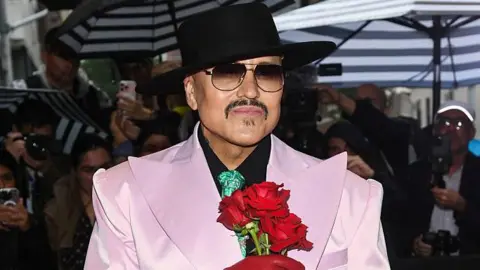In recent news, U.S. fashion designer Willy Chavarria has publicly apologized for a shoe he designed in partnership with Adidas Originals, known as the Oaxaca Slip-On. This footwear drew allegations of cultural appropriation, as it was heavily inspired by traditional Mexican huaraches—leather sandals handcrafted by Indigenous artisans. The controversy surrounding the shoe escalated when it became apparent that the product was manufactured in China without proper consultation or recognition of the cultural heritage from which it was derived.
Chavarria’s apology was significant and expressed deep remorse regarding how the design process unfolded. In a statement released to the BBC, he conveyed: “I am deeply sorry that the shoe was appropriated in this design and not developed in direct and meaningful partnership with the Oaxacan community.” His sentiment reflects a broader issue within the fashion industry regarding cultural sensitivity, especially related to Indigenous communities, which has prompted increasing scrutiny and dialogue.
The controversy was amplified when Mexican President Claudia Sheinbaum addressed the matter at a press conference, emphasizing the tendency of large corporations to adopt designs and cultural symbols from Indigenous peoples without permission. She remarked, “Big companies often take products, ideas and designs from Indigenous communities,” indicating the need for a more ethical approach to cultural collaboration and recognition. Additionally, she mentioned that steps were being taken to evaluate the legal options available to support the affected communities.
Mexico’s Deputy Culture Minister, Marina Nunez, added that Adidas had reached out to Oaxacan officials to discuss restorative actions for those whose cultural expressions had been appropriated uncredited. This highlights a growing movement advocating for the rights of Indigenous communities, as businesses increasingly face pushback for cultural insensitivity or exploitation.
Cultural appropriation itself is defined as “the unacknowledged or inappropriate adoption of the customs, practices, ideas of one people or society by members of a typically more dominant people or society.” This definition is critical in understanding the events unfolding around Chavarria’s footwear and its implications within cultural contexts.
Willy Chavarria’s design did not go unnoticed, and promotional images of the Oaxaca Slip-On were subsequently removed from both Adidas and his social media channels. He elaborated that his intent was to celebrate the vibrant culture and artistic spirit of Oaxaca—an area rich in heritage and resilience. “The name Oaxaca is not just a word—it holds the living culture, people, and history,” he stated in his reflection regarding the design process and its significant failures. He acknowledged that his oversight fell short of the respect and collaborative efforts that the Oaxacan community rightfully deserves.
Chavarria’s background in fashion includes a senior role as vice president of design at Calvin Klein until 2024, and he is currently the founder and chief creative officer of his own label. This professional history colors the weight of his apology as a designer in a dual-identity space, combining both personal and personal identities with broader social contexts.
Despite ongoing public dialogue, Adidas has yet to provide a formal response or comment on the matter to the BBC. However, reports from the Associated Press indicated that the company had indeed reached out to Mexican authorities, expressing a commitment to respecting the cultural significance of Mexico’s Indigenous peoples and acknowledging the relevance of the concerns raised. They reportedly requested a meeting to discuss reparative actions necessary for redressing the harm caused.
The broader implications of this incident cast a spotlight on historical patterns within the fashion industry, reminiscent of past accusations of cultural appropriation like those surrounding French fashion brand Commes Des Garçons, which drew criticism in 2020 for featuring cornrow wigs on white models. The challenge of navigating cultural sensitivity in an increasingly interconnected world continues to evolve, urging creatives and corporations alike to engage in more respectful and meaningful cultural exchanges. Through increased awareness and proactive engagement with communities, the fashion industry could pave the way for a more inclusive and respectful future.











